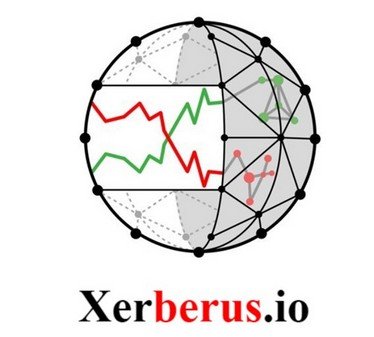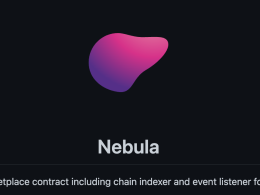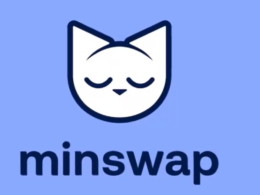The decisive impetus for the rise of cryptocurrencies was the devastating effects of the 2008 financial crisis. Satoshi Nakamoto created Bitcoin with the aim of circumventing the problems of traditional finance and the unscrupulous management of the monetary system.
To create clarity and establish certainty for investors, to understand risk and guide decisions, Risk Rating Agencies for conventional finance were created. But something went wrong. The centralized power was complicit and allowed the sale of securities without support, in which the risk rating agencies “looked the other way”, leading the entire world to a crisis.
Since January 2009, with the first block mined on the Bitcoin blockchain, we have witnessed the birth of cryptocurrencies as an alternative to traditional financial systems and their excesses. However, the crypto industry, until now, has shown no difference, with few exceptions.
Many call for intervention and regulations from centralized authorities to bring order to the crypto world, and in my opinion, it is like asking the wolf to guard the flock.
What is Xerberus?
Did you lose money during the recent cryptocurrency crisis and want to avoid it in the future? Xerberus proposes a Moodys or Fitch Ratings decentralized, so that you have better information.
Financial risks are warning signs, which increase the possibility of losing money that investors have. Xerberus is a data analysis project, whose objective is to create a decentralized organization for financial risk rating, to help investment decision making.
All tokens carry risk, which is often difficult to understand and quantify. Xerberus aims to provide a comprehensive tool for exploring token risk.
Xerberus is presented as a verifiable and decentralized proposal to independently understand risk to evaluate developments, and make the crypto industry a place of participation, and thus unfold its true potential.
How Will Xerberus Work?
The platform will use advanced mathematics in combination with open research markets, to create transparent and immutable risk ratings and trading signals.
The analysis is based on the data content of large data sets. If an asset behaves in a certain way, a signal will be triggered and the risk rating will be adjusted. Since all scores are stored on the blockchain, anyone can evaluate and query them.
The team understands that development must stay true to the original values of cryptocurrencies: maintaining radical transparency and accountability.
The team clearly explains in their Whitepaper that, in a new and poorly regulated financial industry such as cryptocurrencies, there are often “rug pull” projects or projects that have bad intentions, so developers try to classify projects based on their inherent probability of success, failure, or bad intentions using demonstrable methods that can be freely verified by the public.
For this they will use mathematical proofs, and not Artificial Intelligence or Machine Learning, since both methods, although they are promising and have a lot of potential, do not adequately satisfy verifiability. In their opinion, and based on the logical proof mechanics of mathematics, they will be able to achieve a more precise and easily verifiable risk model.
In addition, developers believe in the power of crowd insight to have a predictive market and harness this wisdom to use for analysis, accumulating unconventional and non-empirical data to feed risk analysis.
Xerberus’ approach to data entry will be a comprehensive risk assessment model, combining the transparency of the blockchain, the rigor of mathematics, and the incorporation of data input.
Xerberus will build on the foundations created by traditional rating agencies and combine them with decentralization and transparency. Risk scoring decentralization is achieved by using the wisdom of the crowd rather than the opinions of a select few analysts, with transparent incentives.
Markets allow researchers to communicate their views on future events and their importance by delegating tokens in a research survey. For example, a survey might ask if project X will reach the next milestone within the published schedule and if the achievement of that milestone is important. In this way, an incentive is created for knowledgeable actors to monetize their knowledge and provide an event-based probability curve.
Event-based probability curves are used as a weighting of the empirical data collected from the Cardano blockchain, as well as from the data sources themselves, thus creating a global risk model, which assigns a score based on on-chain and off-chain information.
The event-based probability curve will contain more available knowledge than is currently expressed in the market price, thus obtaining greater data efficiency.
Transparency is created by storing the dynamic results of the risk model in the chain and continually updating them. Anyone with sufficient knowledge can understand the mathematical proof behind the risk assessment.
The analysis model is based on three stages: Priced Information, Knowable Information and Unknowable Information.
The markets of the crypto industry are small and less efficient than the consolidated financial markets, and for this reason, there is a greater difference between Priced Information and Knowable Information. One reason for the lower efficiency of cryptocurrency markets could be the high complexity of their products and the high retail demand for their tokens.
Research Markets Functionality
The Research Markets will allow researchers to delegate Xerberus tokens to forecasts.
These forecasts are essentially a variable set of predictions that a researcher can choose from. A researcher can inspect all the forecasts offered and choose the ones he considers correct by delegating for them.
The investigator must also state whether he believes his prognosis is remarkable or whether he assumes that most other investigators will have reached similar conclusions. In addition, the researcher is asked about his confidence in his prediction and to add some optional qualitative context.
Rewards are paid after an event occurs, and the accuracy of the prediction becomes apparent. Tokens can only be earned but never lost in the research market.
The reward feature stacks with an investigator’s repeat hits, but penalizes investigators who appear to be betting on random odds. A “gambling” researcher will not receive any rewards in our system, since they have not added any information.
Veteran researchers who systematically add statistically significant information to the model can propose forecasts themselves as long as they compromise the warrant of a question proposal. The guarantee is burned if the question does not conform to the formulation rules. The purpose of the wording rules is to prevent biased questions from being published in the research markets.
There will be two main factors for forecast accuracy: first, forecasts must be fairly worded and timely positioned, and second, the standard error of any forecast must be computable and definable.
For more details on this topic, you can consult the Whitepaper.
Tokenomics
The purpose of the Xerberus token, $XER, is to allow users to participate in Xerberus research markets in a decentralized manner that aligns incentives to create a virtuous circle of value creation on the platform.
The token will be the essential vehicle for the creation and distribution of value, giving weight to the opinion of the researcher, with a balance towards the researchers with greater precision.
The token will be used in a decision platform based on governance rights, and is not yet issued and has no date determined for public distribution.
A Xerberus token will grant you the right to use the Xerberus platform, either as a researcher or as a data consumer, being the only way a user can contribute to and access the results of Xerberus research markets.
Therefore, the Xerberus token is a utility token.
The Xerberus Protocol will offer three solutions:
- Allows open cooperation of experts to find a consensus on risks, encouraging their cooperation
- Find a fair market price for information
- Offers transparency into why a risk score is given and archives previous scores in the chain for reference
The Roadmap
End of 2022
- Pre-Alpha Stage: Basic Dashboard with fundamental analysis on tokens, nothing world changing but a good set of information. Pre-Alpha Introduction.
- FUNDING: Self-financing in the beginning.
Early 2023
- Alpha Stage: Expanding the dashboard with risk scores based on blockchain data that provide you unique and in-depth insights into the quality of a project.
- FUNDING: search to acquire the pre-seed funding via ISPO & Project Catalyst.
Mid 2023
- Beta Stage: A prediction market for project researchers whose knowledge will improve risk scores significantly by providing a future dimension. Everyone can now learn about the quality of a project today, and how on what trajectory it is heading in the future.
- FUNDING: We seek to receive our seed funding via strategic investors.
End of 2023
- Fully Functional Stage: A fully functional risk rating organization that provides in-depth knowledge about the quality of a project, its future trajectory and how likely it is to continue on this trajectory.
- FUNDING: Revenues of the prediction market and B2B API.
Mid 2024
- Full Decentralization: The first fully decentralized and transparent risk rating organization in the history of finance.
- FUNDING: Revenues of the prediction market and B2B API.
The Team
“Xerberus Labs” will be incorporated as a Limited Liability Company (Gmbh) in Zug, Switzerland with the intention of becoming a recognized active member of the “Crypto Valley”. Switzerland provides the optimal legal framework for Xerberus products and offers a legislative package that enables a tokenized capital model that enforces on-chain governance of the underlying company.
Simon Peters: Co-Founder, CEO, 2.5 years experience as managing director of a VC-funded crypto startup, part of a larger group serving institutional clients
Noah Detwiler: Co-Founder, CDO, Topological Data Analysis, Physics, Quantum Computing at Ariel University, Served in the IDF, responsible for building the Risk Model.
Matthias Guilbert: COO, Led operations in a traditional industry and served in the French army as an officer.
Web site: https://www.xerberus.io/












